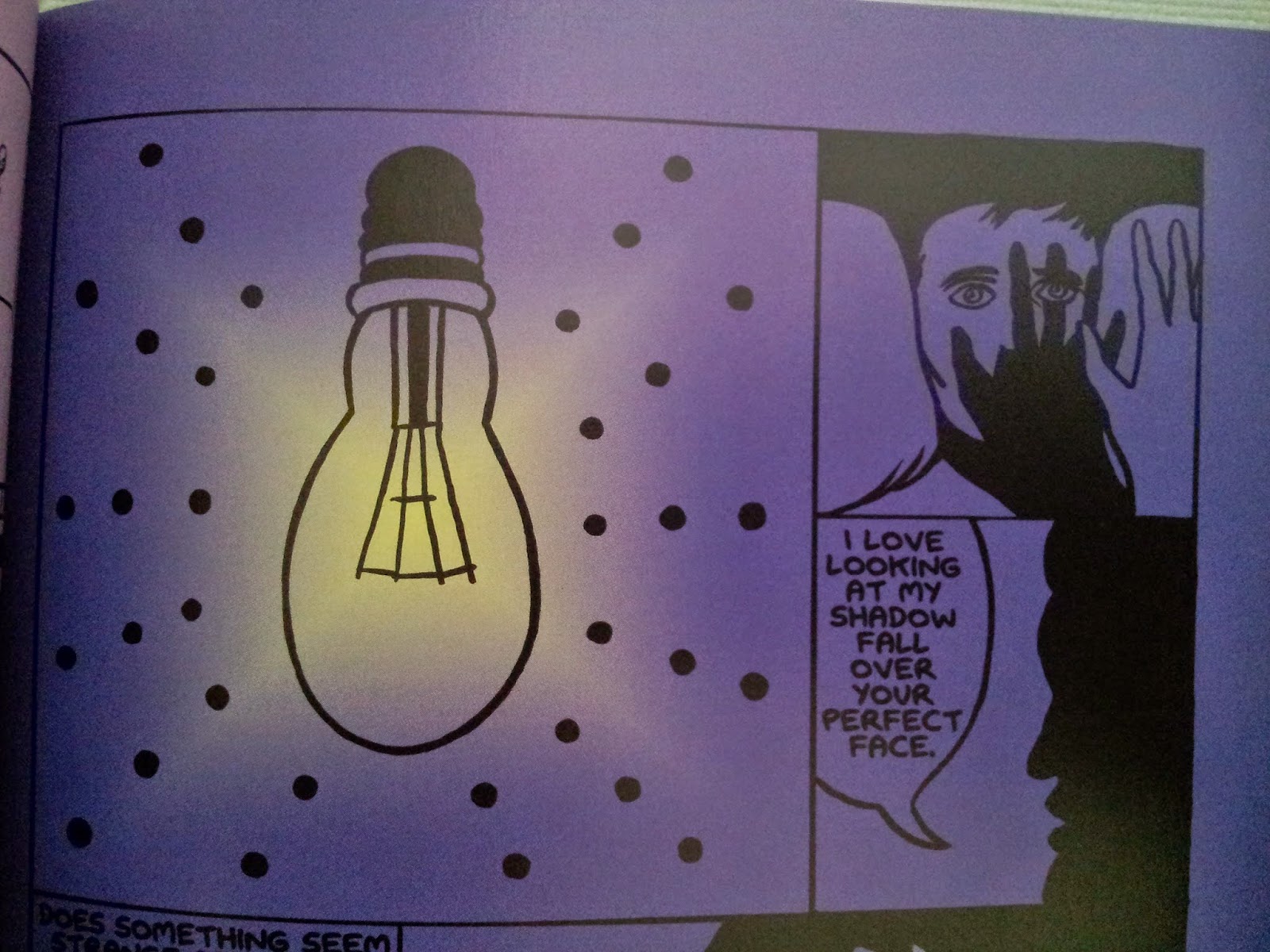 |
| Vile, Miserable, Shallow and Funny |
With the ongoing Pow Pow Press Kickstarter campaign to translate a portion of their catalog in English, I thought I should weigh in and write about one of the books they are aiming to translate. Samuel Cantin's Vile & Miserable is a bizarre comedy which follows the adventures of Lucien Vil, a sad and miserable bookstore employee. His store shares space with Linguine Used Automobile. The book chronicles Lucien's life in 4 days (October 31st, November 1st, January 6th & February 2nd). The premise is more than a little ridiculous; Lucien is a demon who sells used literature in a used car dealership. I'll leave it at that. The interesting aspect of the book is that when you sift through this ludicrous premise, you discover a very thoughtful portrait of sadness and how it can affect one`s life.
 |
| Halloween is the most wonderful day of the year. Not Christmas. Christmas Sucks. |
The comedic aspect of Vile & Miserable comes from the tone and situation in which the characters evolve. The characters' voices are distinct and very modern. Cantin has a good understanding of the way people talk and adapts it for the page very nicely. You can understand the character's education and social class based on the way they talk and what they talk about. For example, Lucien is more educated (or at least well-read) and is more sarcastic, frequently making numerous books and extra-textual references to their authors. His psychologist is also educated, but comes from a lower class area. He is crude, surprisingly so, swears often and talks in slang. I found this to be quite refreshing. The comedic elements aren't limited to language, but they are facilitated by it.
 |
| Let's just add this mustard on your sandwich |
Vile & Miserable are two signifiers that seem to apply for all the characters in the book. The protagonist, Lucien Vil, is sad man. Abstinent for over 40 years, he carries with him his repressed sexual desires and hopelessness at fulfilling them. He lashes out against his colleagues and co-workers frequently. Sylvain Linguine, the owner, is a nicer man, but completely delusional towards his business prospect (The used car industry is dying and he thinks he should start making a living out of the book industry instead?) His new assistant is a nice enough kid, but he's ignorant and a little clueless. These characters all combine organically within the awkward situations they are projected into. This creates absurd situations where they all appear disfunctional, delusional, and miserable. No one goes unscathed in this book.
 |
| You're a real groupie ass kisser spending all your time online checking out author`s shoe sizes. No one gives a crap. Who had syphilis or not. They all had syphillis, every single one of them. |
My only negative comment is the book`s portrayal of women. Unfortunately, none of the female characters (of which there are very few) are portrayed positively. The secretary of the dealership is referred to as an old hag. A woman on the bus is objectified with a ridiculous amount of vile mentions of her pussy. The psychologist secretary is a dumb underage bimbo. Granted, the male characters don't fare much better in terms of being portrayed positively, but their "problems" appear to be more complex than the women. The psychologist's secretary that appears in the third act of the book proved to be very problematic. She is a 16 year old girl who's in love with a man who seems to be 4 to 5 times her age, she's stupid and doesn't have a problem with being objectified in front of perfect stranger. This characterization just seemed too easy to me. The psychologist though is just as miserable a character. He was attracted to "her juvenile charm" when she was only 14 years old. Some might find it funny, but I felt it was lacking the smart spark of the first act and seemed to be just weirdly out of place.
Overall, this book was quite funny. Cantin manages to mix sadness and comedy very well. It didn't land completely with me, but I've read it twice and will gladly read other books by this artist. I encourage everyone to consider Pow Pow Press Kickstarter campaign. The other books on offer Mile End by Michel Hellman and For as long as it rains by Zviane are absolutely fantastic. It would be a very nice addition to anyone's collection and a breath of fresh air for the English comic book market.




















.jpg)

















.jpg)





